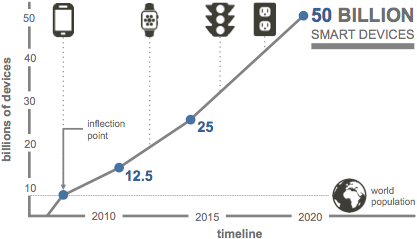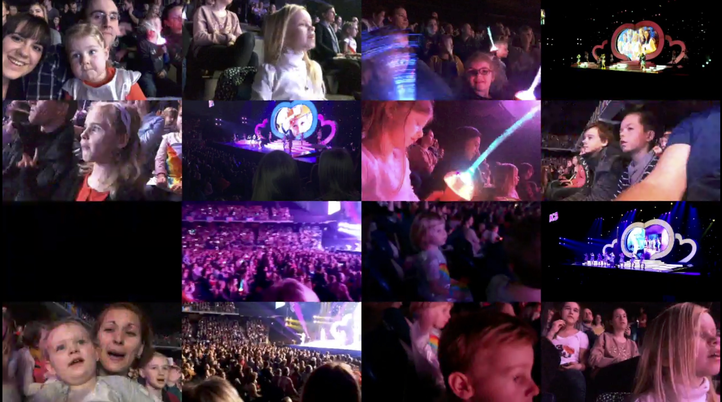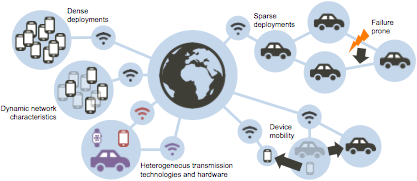Management and Control of Complex Wireless Networks
Throughout the last decade, the Internet has evolved from a network of traditional computers and servers, to a global substrate interconnecting billions of everyday devices. Predictions indicate that this growth will steadily continue, with some even claiming that up to 50 billion devices will be connected to the Internet by 2020. This revolution is generally referred to as the Internet of Things (IoT).

Wireless communication technologies are widely considered a key enabler to connect smart devices to the Internet, due to their high flexibility, cost-effectiveness and easy installation compared to traditional wired networks. This allows them to maintain connectivity in face of device mobility and hard to reach areas. Today's smart IoT devices already exhibit highly heterogeneous hardware constraints, transmission technologies, mobility patterns, and failure rates. These diverging characteristics are only expected to further proliferate in the future. The wireless networks connecting IoT devices to the Internet are similarly evolving and becoming highly dynamic, heterogeneous and failure-prone.
As such, future IoT networks are expected to be highly chaotic, dynamic, complex and unpredictable. Concretely, they exhibit some or all of the following characteristics:
- Heterogeneous: They consist of devices with varying hardware capabilities in terms of computational power, storage capacity, battery constraints and supported transmission technologies. Devices further run applications with diverging demands.
- Dynamic: They contain mobile devices, which may move in predictable or random patterns and cause the network topology and local density to change over time, resulting in varying dense and sparse regions, as well as intermittent connectivity. Also application demands may vary over time.
- Decentralised: The access point infrastructure, connecting devices to the Internet, is not necessarily directly reachable from every device, requiring multi-hop ad-hoc communications.
- Failure prone: Wireless networks are inherently unreliable due to potential interference and disruptions caused by mobility. Moreover, low-power devices and sensors are often comprise low-cost hardware, which makes them extra sensitive to hardware failures.
Within this vision, billions of heterogeneous IoT-capable devices will be connected to the Internet through a myriad of wireless access points, exhibiting varying features and capabilities (including a plethora of heterogeneous technologies). In certain areas devices may be densely packed together, leading to increased competition for limited wireless spectrum and/or wireless channel interference, while in other areas they may be so sparsely deployed, requiring multi-hop routing to ensure end-to-end connectivity. Moreover, device mobility and failures will cause network density to vary over time and require device handovers across access points and even across transmission technologies in order to balance the load in co-located networks. These transmission technologies, which may or may not interfere with each other, will co-exist in the same geographical region.
To tackle this complexity, the IDLab wireless team is looking at the following challenges:
- How to provide Quality of Service on top of an unreliable wireless medium? In this context we look at QoS provisioning, path reservation and interference mitigation techniques when QoS is affected.
- How to provide a unified communication layer that provides a single radio connectivity on top of a heterogeneous set of wireless technologies? In this context, we investigate inter Radio Access Technologies (RAT) handovers or multi-RAT connectivity and the design of a virtualized MAC layer on top of existing wireless radios.
- How to manage the network in extremely challenging conditions such as dense or delay tolerant environments? In this context, we look at self-adaptive management techniques that are able to tune the MAC parameters or even completely and dynamically change the MAC protocol in function of the network environment (e.g., an increasing density).
- How to build a software-defined networking layer for both the high throughput wireless network protocols as well as the resource constrained devices? In this context, we develop software architectures that implement a clear separation between data, control and management plane and that offer unified interfaces to ensure uniform monitoring and intelligent control of radio and network behaviour on heterogeneous devices.
Staff
Eli De Poorter, Jeroen Famaey, Steven Latré, Ingrid Moerman
Researchers
Johan Bergs, Patrick Bosch, Bart Braem, Miguel Camelo,Tom De Schepper, Pedro Isolani, Bart Lannoo, Ruben Mennes, Kathleen Spaey, Bart Spinnewyn, Daniel van den Akker, Jeremy Van den Eynde, Ensar Zelikovic
Jan Bauwens, Spilios Giannoulis, Irfan Jabandžić, Bart Jooris, Merima Kulin, Vasilis Maglogiannis, Michael Mehari, Dries Naudts, Daan Pareit, Peter Ruckebusch, Vincent Sercu, Adnan Shahid, Jo van Damme
Projects
- FP7 FLEX: FIRE LTE testbeds for open experimentation
- FP7 FORGE: Forging online education through FIRE
- H2020 WiSHFUL: Wireless Software and Hardware platforms for Flexible and Unified radio and network controL
- H2020 eWINE: elastic Wireless Networking Experimentation
- H2020 Flex5GWare: Flexible and efficient hardware/software platforms for 5G network elements and devices
- H2020 ORCA: Orchestration and Reconfiguration Control Architecture
- ICON FORWARD - Factories operating on Robust Wireless Automation: Research and Design
- ICON SafeDroneWare: An architecture and framework for safe and autonomous UAV applications
- ICON COMACOD: Control and Management of Constrained Devices
- ICON CONAMO - Continuous Athlete Monitoring
- ICON SELVIE
- FWO/SBO SAMURAI: Software Architecture and Modules for Unified RAdIo control
- GOA Disposable and biodegradable wireless networks for extreme conditions
- ICON SHIFT-TV
- ICON iFEST - improved festival experience through wireless technology
- H2020 Synchronicity
- City of Things platform
Key publications
- Daneels, G., Famaey, J., Bohez, S., Simoens, P. and Latré, S., 2015, December. Upstream Content Scheduling in Wi-Fi DenseNets during Large-scale Events. In 2015 IEEE Globecom Workshops (GC Wkshps) (pp. 1-7). IEEE.
- Mijumbi, R., Serrat, J., Gorricho, J.L., Latré, S., Charalambides, M. and Lopez, D., 2016. Management and orchestration challenges in network functions virtualization. IEEE Communications Magazine, 54(1), pp.98-105.
- Ruckebusch, P., De Poorter, E., Fortuna, C., & Moerman, I. (2016). GITAR: Generic extension for Internet-of-Things ARchitectures enabling dynamic updates of network and application modules. Ad Hoc Networks, 36, 127-151.
- Ruckebusch, P., Bauwens, J., Jooris, B., Giannoulis, S., De Poorter, E., Moerman, I., Garlisi, D., Gall0, P., Tinnirello, I. (2016, June). Cross-technology wireless experimentation: Improving 802.11 and 802.15. 4e coexistence. In 2016 IEEE 17th International Symposium on A World of Wireless, Mobile and Multimedia Networks (WoWMoM) (pp. 1-3).
- Jooris, B., Bauwens, J., Ruckebusch, P., De Valck, P., Van Praet, C., Moerman, I., & De Poorter, E. (2016). TAISC: a cross-platform mac protocol compiler and execution engine. Computer Networks. Vol. 107, pp 315–326
- Ruckebusch, P., Giannoulis, S., De Poorter, E., Moerman, I., Tinnirello, I., Garlisi, D., Gallo, P., Kaminski, N., DaSilva, L., Gawłowicz, P., Chwalisz, M., Zubow, A. "A unified radio control architecture for prototyping adaptive wireless protocols," 2016 European Conference on Networks and Communications (EuCNC), Athens, Greece, 2016, pp. 58-63.


